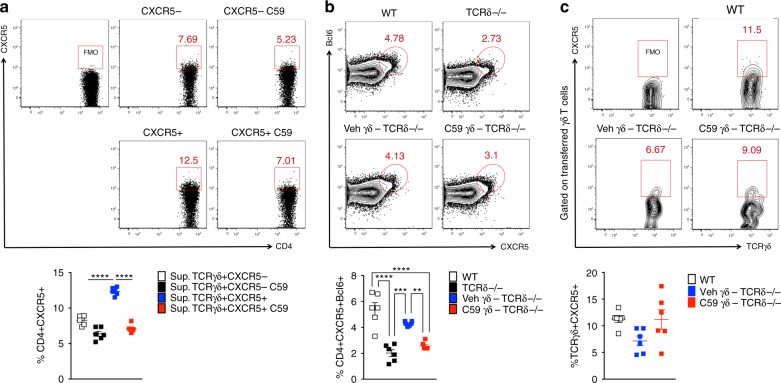Fig. 8.
TCRγδ+CXCR5+ cells induce Tfh cells by releasing Wnt ligands. a In vitro CXCR5 induction on naïve CD4+ T cells cultured in the presence of supernatants from TCRγδ+CXCR5− or TCRγδ+CXCR5+ cells, treated or not with the porcupine inhibitor Wnt-C59 (C59; 1 μM), sorted from WT mice 4 days after CFA immunization and activated with anti-CD3ε and anti-CD28 (both at 2 μg ml−1) for 3 days at 37 °C. Naïve CD4+ T cells, sorted from naïve WT mice, cultured with the described supernatants were also stimulated with anti-CD3ε and anti-CD28 (both at 2 μg ml−1) for 3 days at 37 °C (n = pooled cells from 15 mice). b, c In vivo CXCR5 and Bcl6 induction in CD4+ T cells (b) and CXCR5 expression on γδ T cells (c) from dLN of TCRδ−/− mice transferred with γδ T cells from WT mice treated with either 10 mg kg−1 of Wnt-C59 (C59) or vehicle (Veh). WT mice were sacrificed 24 h after Wnt-C59 or vehicle treatment and a total of 5 × 105 γδ T cells were intravenously injected into TCRδ−/− mice, which were immunized with CFA and sacrificed 7 days later (n = 6 mice/group, combined from three independent experiments where γδ T cells are sorted from a pool of 10 mice/group/experiment). These data are representative of two to three independent experiments. Data are shown as mean + SEM. One-way ANOVA was used. *p < 0.05, ***p < 0.001

